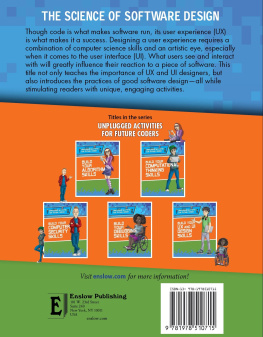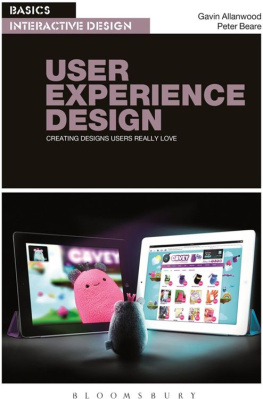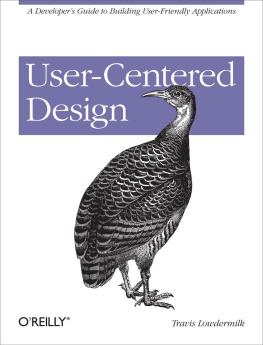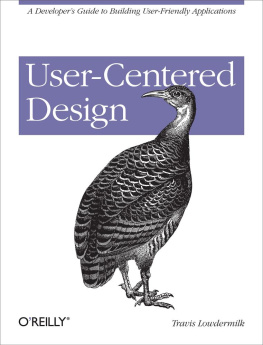About This eBook
ePUB is an open, industry-standard format for eBooks. However, support of ePUB and its many features varies across reading devices and applications. Use your device or app settings to customize the presentation to your liking. Settings that you can customize often include font, font size, single or double column, landscape or portrait mode, and figures that you can click or tap to enlarge. For additional information about the settings and features on your reading device or app, visit the device manufacturers Web site.
Many titles include programming code or configuration examples. To optimize the presentation of these elements, view the eBook in single-column, landscape mode and adjust the font size to the smallest setting. In addition to presenting code and configurations in the reflowable text format, we have included images of the code that mimic the presentation found in the print book; therefore, where the reflowable format may compromise the presentation of the code listing, you will see a Click here to view code image link. Click the link to view the print-fidelity code image. To return to the previous page viewed, click the Back button on your device or app.
Institutionalization of UX
A Step-by-Step Guide to a User Experience Practice
Second Edition
Eric Schaffer
Apala Lahiri

Upper Saddle River, NJ Boston Indianapolis San Francisco
New York Toronto Montreal London Munich Paris Madrid
Capetown Sydney Tokyo Singapore Mexico City
Many of the designations used by manufacturers and sellers to distinguish their products are claimed as trademarks. Where those designations appear in this book, and the publisher was aware of a trademark claim, the designations have been printed with initial capital letters or in all capitals.
The authors and publisher have taken care in the preparation of this book, but make no expressed or implied warranty of any kind and assume no responsibility for errors or omissions. No liability is assumed for incidental or consequential damages in connection with or arising out of the use of the information or programs contained herein.
For information about buying this title in bulk quantities, or for special sales opportunities (which may include electronic versions; custom cover designs; and content particular to your business, training goals, marketing focus, or branding interests), please contact our corporate sales department at or (800) 382-3419.
For government sales inquiries, please contact .
For questions about sales outside the U.S., please contact .
Visit us on the Web: informit.com/aw
Library of Congress Cataloging-in-Publication Data
Schaffer, Eric.
[Institutionalization of usability.]
Institutionalization of UX : a step-by-step guide to a user experience practice / Eric Schaffer, Apala Lahiri. -
Second edition.
pages cm
Includes bibliographical references and index.
ISBN 978-0-321-88481-7 (pbk. : alk. paper)
1. User interfaces (Computer systems) 2. Computer software--Development. I. Lahiri, Apala. II. Title.
QA76.9.U83S36 2013
005.4'37--dc23 2013039144
Copyright 2014 Human Factors International
All rights reserved. Printed in the United States of America. This publication is protected by copyright, and permission must be obtained from the publisher prior to any prohibited reproduction, storage in a retrieval system, or transmission in any form or by any means, electronic, mechanical, photocopying, recording, or likewise. To obtain permission to use material from this work, please submit a written request to Pearson Education, Inc., Permissions Department, One Lake Street, Upper Saddle River, New Jersey 07458, or you may fax your request to (201) 236-3290.
ISBN-13: 978-0-321-88481-7
ISBN-10: 0-321-88481-7
Text printed in the United States on recycled paper at RR Donnelley in Crawfordsville, Indiana.
First printing, December 2013
Preface
More than ten years ago, I wrote The Institutionalization of Usability. Now, so much has changed in the field that a very new edition is needed. For one thing, the name of the field has changed. We now call ourselves user experience (UX) designers. With that change in title comes new responsibilities. We no longer can focus on simple tasks and humancomputer interaction. Systems are embedded everywhere, and we must design for complex ecosystems. That means using ethnographically inspired methods and advanced tools for knowledge management. It is no longer enough to make a site or application easy to use. Usability is now a hygiene factorto be competitive, most organizations must understand how to engineer persuasion into their digital systems. In turn, we need a whole new set of methods and insights that let us systematically design for engagement, psychological influence, and customer commitment.
The field has also reached up the value chain within organizations. A UX team that deals with only the details of radio buttons and check boxes is committing a disservice to its organization. Today UX groups must deal with strategy. We must help define how executive intent can be turned into successful designs and the desired business results. So the executive wants to transition customers into low-cost, digital channelswhy will the customer want to make that transition? The UX team must design the cross-channel integration and optimization so that customers will understand which channel to use and will experience a common but appropriate interaction on the Web, mobile device, tablet, or other device.
Finally, the UX team is a key component of the organizations innovation process.
When I wrote Institutionalization of Usability, the idea of a mature, industrial-strength practice seemed remote to most people. I debated this topic with the great usability pioneer Jared Spool in a session that was billed as The Celebrity Death Match. His argument was that usability could be practiced only as craftsmanshipthat it could not be institutionalized. Yet I was already institutionalizing it within my own company, Human Factors International, Inc. (HFI), and starting to help my corporate clients build their own practice. Today, most organizations of any size and sophistication are building UX teams, and there is widespread recognition that customer-centered design is the best practice for system development. In the process of helping to mature our clients UX teams, we have learned quite a lot.
The challenges of institutionalization have clearly changed. In the past, the major issue was securing executive championship. Today, however, most high-level executives understand that customer experience is a key business goal. They have read about the user experience economy, seen Apple Computer thrive, and read innumerable executive briefings on customer experience. Unfortunately, these executives often have no idea how to bring about UX, and they take a fairly predictable set of wrong paths to try to make it happen. In addition, there are still challenges in culture change and governancecultural and organizational design issues are pivotal today. Staffing also poses serious challenges. It is common for organizations to get perhaps 2% of the UX staff they need and then drop the initiative when they find that their designs have not substantially improved, and their UX team seems demoralized. Yet the pool of qualified UX specialists remains small. HFI is by now quite experienced in hiring practices, internal training, and the use of offshore resources.
Setting up a UX infrastructure today is relatively easy. Training and certification are available. Methods and standards simply need to be customized to fit an organizations needs, and plenty of new UX tools can be readily accessed. These foundational components should no longer be an impediment to creating a UX capability.












